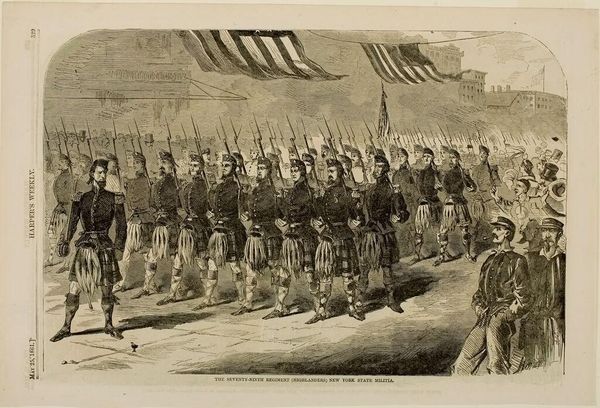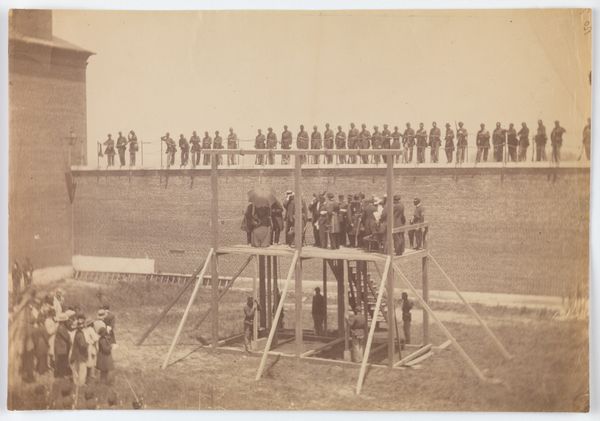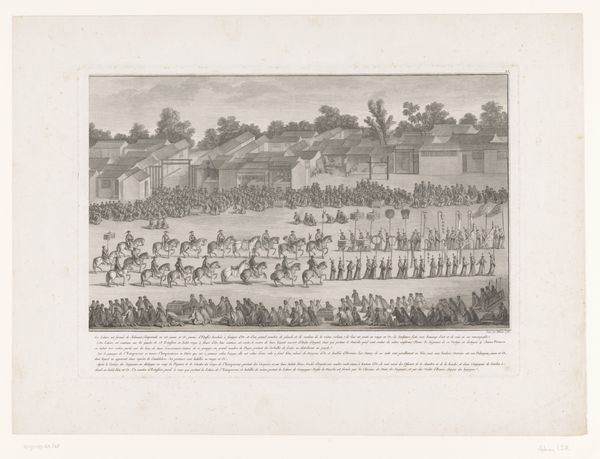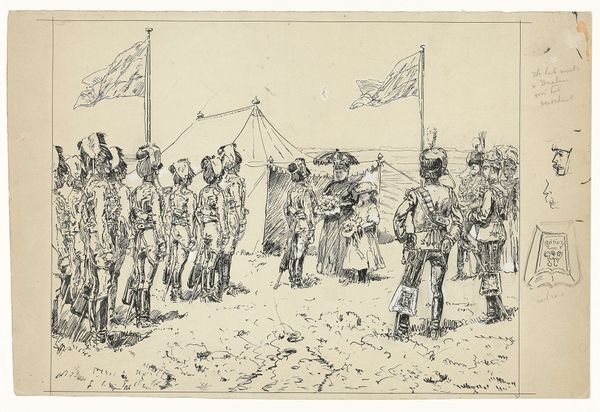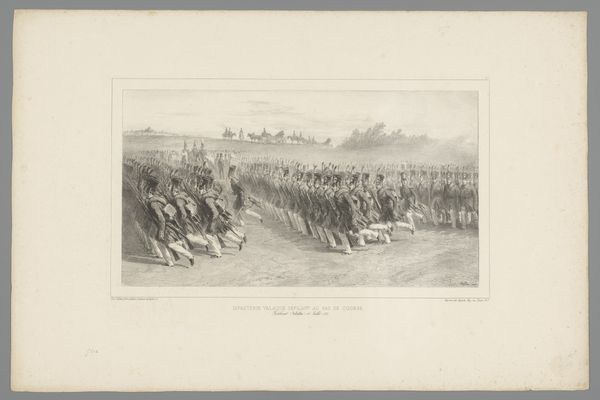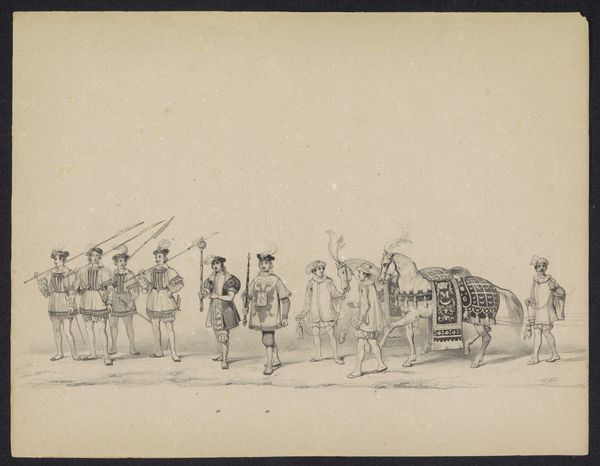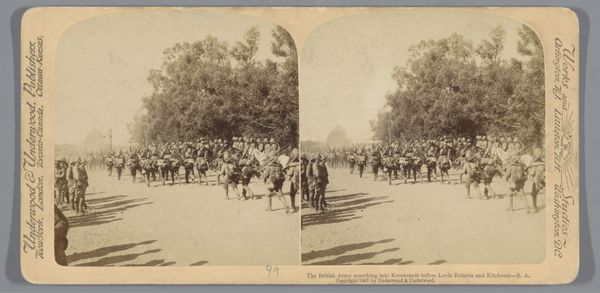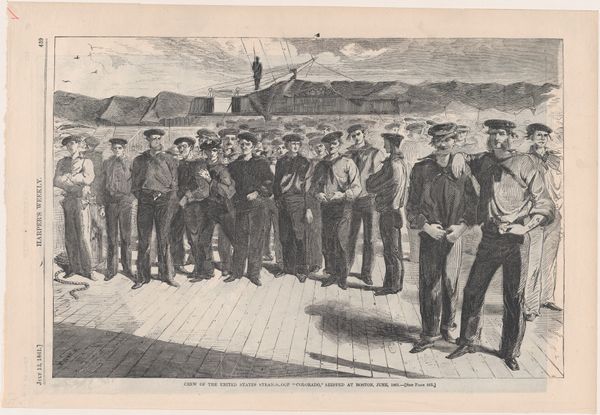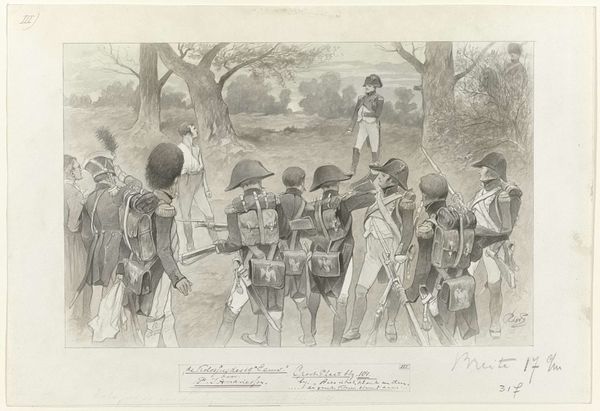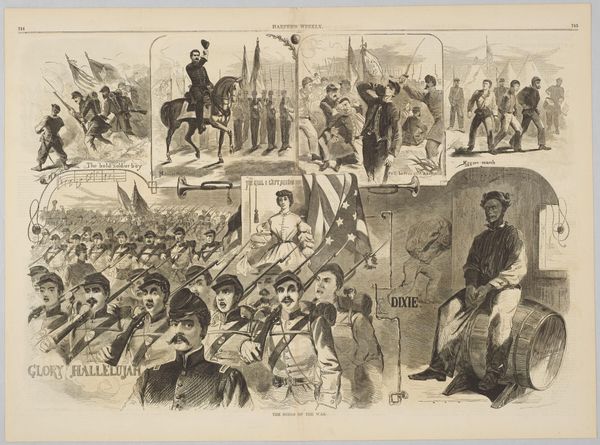
print, wood-engraving
#
narrative-art
# print
#
united-states
#
genre-painting
#
history-painting
#
academic-art
#
wood-engraving
#
realism
Dimensions: 9 3/16 x 13 3/4 in. (23.3 x 34.9 cm)
Copyright: Public Domain
Curator: Winslow Homer’s 1861 wood engraving, "The Seventy-Ninth Regiment (Highlanders)", depicts a regiment, kilts swinging, marching under the American flag. What is your initial impression? Editor: It feels very…orderly. The repetition of figures, the strong horizontal lines of the flags and the architecture in the background, and the careful rendering of light and shadow create a powerful sense of structured formality. Almost rigid. Curator: Right. Homer, early in his career, worked as an illustrator for publications like Harper’s Weekly. This image captures the 79th New York Volunteer Infantry, also known as the Highlanders, as they marched, most likely for training, or deployment during the Civil War. Note how the uniforms, specifically the Scottish kilts, connect to immigration at the time and the multi-ethnic make up of the Union army. Editor: The meticulous detail in the wood engraving lends a documentary quality, yet, ironically, I sense a certain ambiguity. The faces, although numerous, lack individuality. They seem more like components of a larger, almost abstract, design. Even the flags seem… detached. Curator: The flags’ placement does echo classic military formations but beyond aesthetics it represents something more profound. Homer’s composition suggests not just the regiment’s presence, but also America’s attempt to hold on to a sense of unity in 1861 as it was on the precipice of fracturing. Look closer at the background elements as well - do you see those blurred architectural renderings of civic and government buildings that speak to the undergirding of the community these soldiers have promised to protect? Editor: I do. Now that you mention it, the entire arrangement evokes a sense of depth – and perhaps hidden anxiety? – masked by surface decorum. The high contrast printing method creates an overall grey scale effect as if fading with time or covered in ash. Even more pronounced, the texture in the fabrics and grass provides visual contrast with their stoic pose. Curator: Precisely! And those very fabrics indicate both European military pageantry and homespun practicality for war. This duality and Homer’s technical brilliance reminds us that historical artworks often serve as mirrors to social realities, more complex than their seemingly straightforward representations. Editor: Yes, thank you! It strikes me now as a visually appealing encapsulation of conflicted identity: structure versus individual, and appearance against underlying turbulence.
Comments
No comments
Be the first to comment and join the conversation on the ultimate creative platform.

